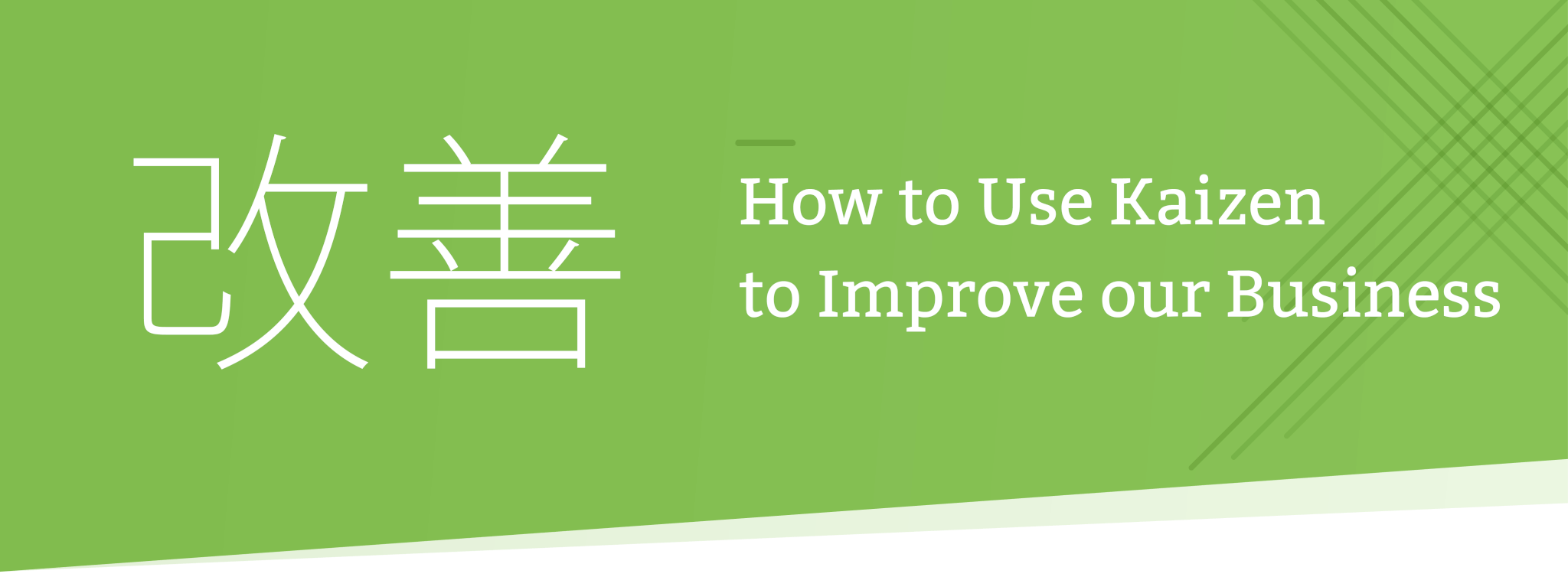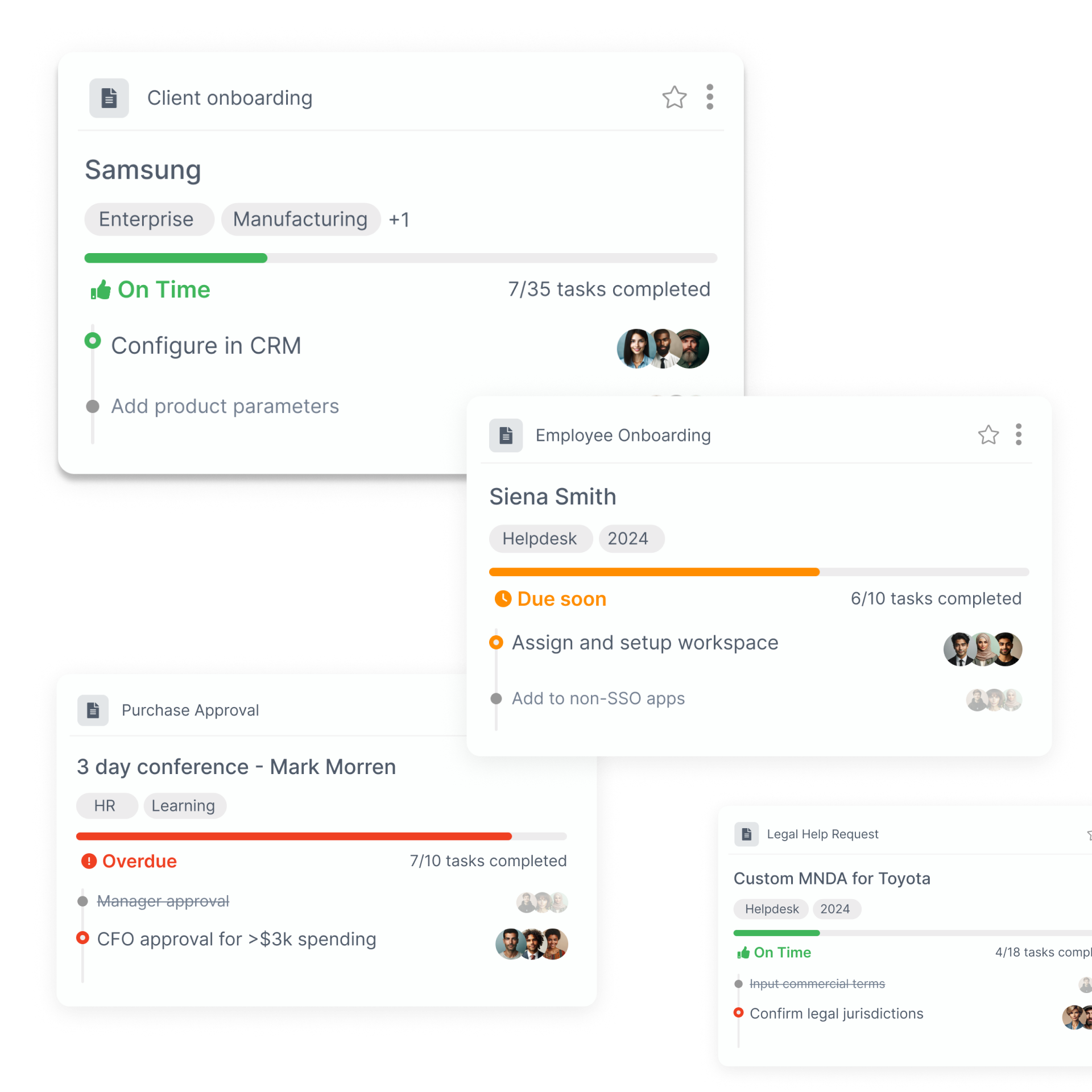
Change and improvement is an essential part of any organization. To stay ahead of your competition and never miss an opportunity, you have to constantly be looking for different ways to improve.
There are 2 types of “change” that can happen in an organization…
- Breakthrough Change – Anything that’s a major overhaul of the organization. These usually require months of planning, work, and a high budget.
- Continuous Improvement – All the minor changes you make on-the-go. Think, any tiny detail that, if fixed, could make your business more efficient.
More often than not, you’ll be doing the later.
Breakthrough change is something an organization does very rarely. For example, if you’re adopting some software organization-wide. Or, if you’re planning on making major strategic changes.
Continuous improvement, on the other hand, is the day-to-day stuff: making minor changes or improvements to your company processes. In a lot of cases, continuous improvement is also a major part of breakthrough change. Once you make an organization-wide change, there are a lot of small improvements to be made all around.
This isn’t as easy as it sounds, though. Just about every company manager knows that they should focus on improving the organization. The hard part here is the “how?”
One of the most popular approaches to continuous improvement is Kaizen, which is a Japanese approach to management.
What is Tallyfy?
Tallyfy helps you document and automate tasks between co-workers and clients
Click here to learn about TallyfyWhat’s Kaizen?
By definition, Kaizen means change (kai) for the better (zen). The main idea of the philosophy is continuous improvement – there’s potential for improvement in just about everything.
To get a better idea of how this works, we can contrast it to the Western idea of “Innovation.” Here’s how the two concepts differ…
Kaizen | Innovation | |
| Effect | Long-term, but no major changes | Short-term, but drastic change |
| Pace | Small steps | Big steps |
| Change | Gradual & consistent | Abrupt & volatile |
| Involvement | Everyone within the organization | Key players / technical specialists |
| Concentration of Effort | People | Technology |
Now, Kaizen does sound nice in theory, but you’re probably wondering how it translates into practice. How, exactly, do you use the power of Kaizen for the benefit of your own organization?
Well, there are 2 distinct parts to Kaizen…
- Philosophy – The main idea behind Kaizen is that improvement should be everyone’s responsibility, whether they’re the C-suite or shop floor employees. Helping improve the organization should be both encouraged and rewarded.
- Action – Even if you achieve a culture of continuous improvement, it doesn’t mean that the actual improvement initiatives will happen on their own. You’ll need to organize Kaizen Events, which is the execution part of the methodology.
In a way, the philosophical aspect of Kaizen leads to real action
If your company has a culture of improvement, your employees will show initiative and organize Kaizen Events.
If it doesn’t, though, your initiatives are more likely to fail. Unless you have buy-in from the employees, they’re not going to be very proactive in helping improve the company.
For a company that does manage to get both aspects of Kaizen right, though, they’ll end up reaping countless benefits…
- Efficient Processes – Since the staff will constantly be focused on improvement, your processes will be as efficient as possible.
- Satisfied & Engaged Employees – Everyone likes to be valued in a company. By making your employees’ opinions be heard, considered and implemented, they’re significantly more likely to be happy with the job.
- Better Product or Service – As a result of the first two points, your product or service will be better in terms of either quality or price.
Using Kaizen to Improve Your Company
Getting started with Kaizen can seem daunting. There’s no one-size-fits-all solution to changing company culture – every organization is unique in its own way.
Nor is it easy to organize Kaizen Events. Unless there’s a lot of engagement and hard work from your employees, the initiative won’t go far.
There are, however, several best practices that can make the adoption of Kaizen easier.
Since the two aspects of Kaizen are interconnected, we’ll cover how to make each happen.
Establishing a Culture of Kaizen
The first step to making a real change to company culture is actually making the announcement.
Let your employees know that from now on, you’ll be doing things a bit differently. Make it clear that any kind of suggestions for process improvement will be valued and rewarded.
This should, however, be reflected in the behavior of your management team. They should never dismiss offers of help or suggestions for improvement.
Then, you’ll need to figure out a way to actually receive process and analyze these suggestions.
According to Masaaki Imai, a Japanese management consultant, one way to do this is by implementing Kaizen Corners.
A Kaizen Corner is a place where your employees can go to submit their ideas.
If you’re old-school, you can make it an actual place. Or, you could always do it online through software or email.
For the implementation part, Maasaki recommends doing it in 3 stages…
- Stage One – All the submitted suggestions are considered and evaluated. If they’re not put into practice, the employee gets feedback on the “why.” This stage ensures that your employees know their opinion is valued & won’t be discouraged.
- Stage Two – You train the employees on how process improvement works, allowing them to contribute better.
- Stage Three – Create a rewards system for employees that really work hard to help with process improvement. This way, the entire initiative isn’t just a phase that your employees will get bored of.
In some cases, though, your average employee can’t help too much with process improvement. While they do know their job, they can’t help with anything overly technical.
For any such task, you would want to employ a group of experts with a technical background.
Once you’ve got the ball rolling & already have a handful of ideas on how to improve your organization, you can start organizing Kaizen Events.
Improve Processes with Kaizen Events
Past all the theory and philosophy, Kaizen is composed of a bunch of tools or methodologies that help put all that into practice.
The tools are part of “Kaizen Events,” which in layman’s terms, means a process improvement initiative. That’s when you pinpoint a problem and start working towards a solution.
Some of the methodologies in the Kaizen toolkit include…
Kaizen Methodologies | |
Tool Name | Definition |
| Suggestion system | The Suggestion System is a methodology for communicating improvement suggestions from the employees to the company management. One of the most common ways of doing this is by putting “suggestion boxes” around the office. If you’re more tech-savvy, you could also use some sort of software for this |
| Quality Control Circle (QCC) | While all of your employees can propose improvements, not everyone can actually implement them. QCC’s are a small team of specialists who work on finding problems & proposing potential solutions |
| Total Quality Management (TQM) | Unlike the rest of the Kaizen tools we’ve mentioned, TQM is more of a general approach to management. The “Total” part means that everyone in the organization, from shop-floor workers to C-suite, should be involved in the process of company improvement. The “quality control,” on the other hand, means the process of measuring and improving your processes. In a nutshell, TQM is the Japanese equivalent of Business Process Management (BPM) |
| Plan-Do-Check-Act (PDCA) | The PDCA cycle is the steps you need to take to keep your processes functioning as efficiently as possible. “Plan” means identifying the process to be improved & creating an action plan. “Do” is the implementation of the aforementioned plan. “Check” is, well, double-checking whether the plan actually brought about the expected improvement. If this phase has negative results, you start the cycle anew. If it works, you move on to “act,” which is the implementation of the new process company-wide |
| Business Process Mapping | Process mapping is more of a hands-on approach to process improvement. You create a workflow flowchart, which is essentially the exact steps your employees need to take for any given process to be completed. If you have the process visualized, it’s significantly easier to come up with potential improvements |
Once you’ve pinpointed a very specific problem, you can organize a Kaizen Event to solve it.
The usual steps here are…
- Organize the Team – You’ll need a Quality Control Circle (QCC) to help solve the problem. This team usually consists of several shop-floor employees, process specialists, and someone from the management.
- Pinpoint the Exact Problem – You need to be very specific on this. What’s the exact problem you’re trying to solve? What’s the expected outcome? To make this easier, you can use Business Process Mapping.
- Find Key Metrics – If you don’t know what you’re improving, the entire initiative will go to waste. Figure out what metrics to track & benchmark so that you have something to compare with the new process.
- Create Potential Solutions – This step, as a given, varies depending on what process you’re improving. It could mean anything: removing steps from a process, adopting new software, etc.
- Test the Solutions – Compare the new metrics to the old. Is the new process performing better? Keep in mind that sometimes, the solution can be short-term. You could, for example, improve product output and defect rate at the same time. The first can be seen from the start, but the later might take a while to pop up.
- Implement the New Process Company-Wide – Once you’re sure that the new process is functioning better than the old, you can start scaling it.
Process Management with Workflow Software
As we’ve already mentioned, one of the key parts of Kaizen is improving company processes.
Back in the old days, this was done manually. You find a process to fix, draw it out on a piece of paper, and implement potential improvements.
Today, this isn’t exactly the most efficient option. There are, after all, software solutions available for just about everything.
Business process management software (BPMS) is the best companion you can have on when it comes to implementing Kaizen in your workplace. Such tools help you with…
- Changing Processes – Once you’ve come up with improvements to a process, you need to communicate it with your employees. Unless you only have a handful of employees, though, this can be very hard. Some employees might not fully understand how the new process is done; others might often forget the new changes. With BPM software, all you have to do is change the process within the platform. From that point on, the system will make sure that everyone sticks to the new process.
- Process Enforcement – People hate change. In some cases, your employees will disregard or forget the changes you’ve made to the process, reverting back to the old way of doing things. Once you change a process with BPMS, though, it’s set-in-stone.
- Process Analytics and Improvement – Process improvement should always be based on data and metrics. You can’t improve a process without knowing if you’re doing the job right. Process management software comes with inbuilt analytics, keeping track of any given metric. This way, it’s extremely easy to keep track of your improvements.
And you know what the best part is? Starting with process management software is completely free. Sign up and see how the software can help improve your processes.

